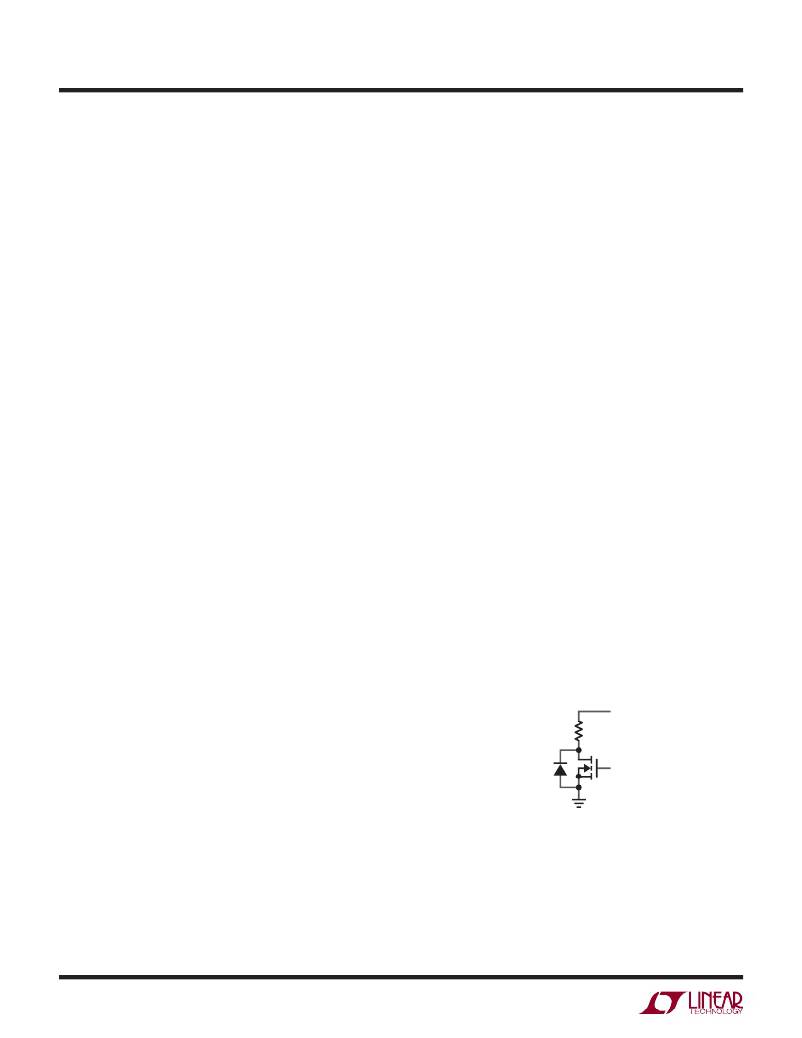- 您现在的位置:买卖IC网 > PDF目录16296 > LTC4110EUHF#PBF (Linear Technology)IC BATTERY BACKUP MANAGER 38-QFN PDF资料下载
参数资料
| 型号: | LTC4110EUHF#PBF |
| 厂商: | Linear Technology |
| 文件页数: | 46/52页 |
| 文件大小: | 0K |
| 描述: | IC BATTERY BACKUP MANAGER 38-QFN |
| 标准包装: | 52 |
| 功能: | 备份管理 |
| 电池化学: | 铅酸,锂离子,锂聚合物,镍镉,镍氢,超级电容器 |
| 电源电压: | 4.5 V ~ 19 V |
| 工作温度: | -40°C ~ 85°C |
| 安装类型: | 表面贴装 |
| 封装/外壳: | 38-WFQFN 裸露焊盘 |
| 供应商设备封装: | 38-QFN(5x7) |
| 包装: | 管件 |
| 产品目录页面: | 1341 (CN2011-ZH PDF) |
第1页第2页第3页第4页第5页第6页第7页第8页第9页第10页第11页第12页第13页第14页第15页第16页第17页第18页第19页第20页第21页第22页第23页第24页第25页第26页第27页第28页第29页第30页第31页第32页第33页第34页第35页第36页第37页第38页第39页第40页第41页第42页第43页第44页第45页当前第46页第47页第48页第49页第50页第51页第52页
�� �
�
 �
�LTC4110�
�APPLICATIONS� INFORMATION�
�OPERATION� WITH� DUAL� BACKUP� SYSTEMS�
�If� a� dual� backup� system� consisting� of� two� LTC4110s�
�each� with� its� own� backup� battery� is� needed� and� a� SMBus�
�is� used,� each� LTC4110� should� be� programmed� by� the�
�SELA� pin� to� have� different� addresses.� If� smart� batteries�
�with� SMBus� are� used,� a� SMBus� mux� may� be� required� to�
�selectively� address� each� battery.� This� mux� may� also� be�
�used� to� address� the� LTC4110.� See� SMBus� Interface� section�
�for� more� information.�
�BACKUP� OPERATION� WITH� EXTERNAL� BACKUP�
�SUPPLY� REGULATOR�
�If� a� dedicated� DC� regulator� with� enable� inputs� is� used� in�
�place� of� an� actual� battery� to� supply� backup� power,� the�
�PowerPath� MOSFETs� connected� to� the� BATID� pin� may� not�
�be� required.� It� depends� on� the� regulator’s� ability� to� accept�
�being� back� driven� by� a� voltage� on� the� DCOUT� pin� coming�
�from� some� other� power� source� such� as� DCIN.� The� ACPb�
�pin� can� control� the� regulator� such� that� it� is� turned� on� when�
�DCIN� goes� away.� However� for� fastest� transient� response,�
�keeping� the� regulator� on� may� prove� to� work� better.� The�
�output� voltage� of� the� regulator� should� be� less� than� DCOUT�
�under� normal� operating� conditions� so� that� DCIN� is� pro-�
�viding� the� power� to� the� load.� The� voltage� provided� by� the�
�regulator� must� not� be� allowed� to� go� below� the� lower� limit�
�of� the� DCOUT� pin� or� erratic� operation� may� result.�
�BACKUP� OPERATION� WITH� A� DOWNSTREAM�
�REGULATOR�
�DCIN� TO� BATTERY� TRANSITION� CHATTER� REMOVAL�
�The� LTC4110� is� designed� to� automatically� switch� the� bat-�
�tery� to� the� output� load� when� DCIN� is� lost.� Under� certain�
�conditions,� a� rapid� loss� of� DCIN� can� cause� the� input� and�
�battery� ideal� diode� circuits� to� chatter.� The� result� is� the�
�transition� time� between� the� DCIN� FET� turning� fully� off�
�and� the� battery� FET� turning� fully� on� can� last� in� excess�
�of� 200ms� with� each� switching� on� and� off� multiple� times.�
�This� problem� is� likely� to� occur� under� the� following�
�conditions:�
�1.� Large� system� load� causing� the� INID� pin� to� be� more�
�than� 3V� below� DCIN.�
�2.� The� DCIN� and� battery� voltages� are� approximately� the�
�same.�
�3.� The� DCIN� pin� goes� high� impedance� very� rapidly� (less�
�than� 10μs)�
�Q1� and� R1� shown� in� Figure� 20� increase� the� effective� hys-�
�teresis� of� the� DCDIV� pin� by� using� the� ACPb� pin� to� drive�
�Q1.� The� threshold� of� Q1� must� be� less� than� the� V� SUPPLY�
�to� assure� the� drain� of� Q1� pulls� down� to� ground� when�
�ACPb� is� high.� R1� sets� the� amount� of� increase� in� negative�
�hysteresis� you� need� relative� to� the� values� chosen� for� the�
�DCDIV� resistor� divider.� A� 100k� is� suggested� as� a� starting�
�point.� You� will� also� need� to� place� a� capacitor� C� ACPDLY� on�
�the� ACPDLY� pin.� This� capacitor� in� conjunction� with� resistor�
�R� VREF� should� be� set� for� a� delay� of� 10ms,� which� is� more�
�than� suf?cient� to� eliminate� all� the� chatter.�
�Since� the� backup� voltage� supplied� to� the� load� is� not� regu-�
�lated,� often� some� form� of� a� regulator� is� needed� between�
�the� LTC4110� and� the� actual� load.� The� characteristics� of�
�this� regulator� should� offer� high� ef?ciency� when� running�
�from� the� battery� in� backup� mode� to� maximize� backup�
�Q1�
�2N7002�
�R1�
�100k�
�DCDIV�
�ACPb�
�time.� Some� regulators� may� need� advance� warning� when�
�to� enter� into� this� mode,� which� can� be� accomplished� by�
�Figure� 20.�
�4110� F20�
�using� the� LTC4110’s� ACPb� pin.�
�4110fb�
�46�
�相关PDF资料 |
PDF描述 |
|---|---|
| 3-6754412-6 | CA,XG,MTRJ-SC |
| ECO-S2DB102EA | CAP ALUM 1000UF 200V 20% SNAP |
| 3-6754411-6 | CA,XG,MTRJ-SC |
| RCM10DRYI-S13 | CONN EDGECARD 20POS .156 EXTEND |
| ECO-S2WB181DA | CAP ALUM 180UF 450V 20% SNAP |
相关代理商/技术参数 |
参数描述 |
|---|---|
| LTC4110EUHF-TR | 制造商:LINER 制造商全称:Linear Technology 功能描述:Battery Backup System Manager |
| LTC4110EUHF-TRPBF | 制造商:LINER 制造商全称:Linear Technology 功能描述:Battery Backup System Manager |
| LTC4120IUD#PBF | 制造商:Linear Technology 功能描述:BATTERY CHARGER, 400MA, QFN-16, Battery Type:Li-Ion, Li-Polymer, Input Voltage:4 |
| LTC4150 | 制造商:LINER 制造商全称:Linear Technology 功能描述:High Voltage, High-Side Current Sense |
| LTC4150_1 | 制造商:LINER 制造商全称:Linear Technology 功能描述:Coulomb Counter/ Battery Gas Gauge |
发布紧急采购,3分钟左右您将得到回复。